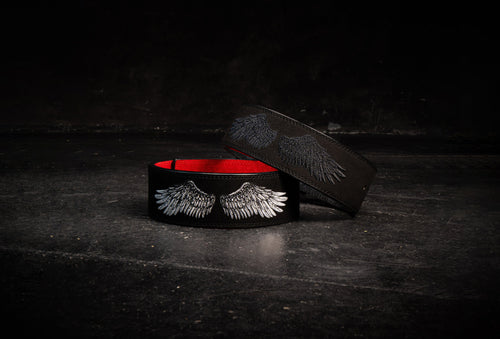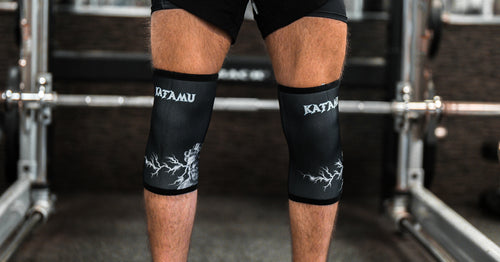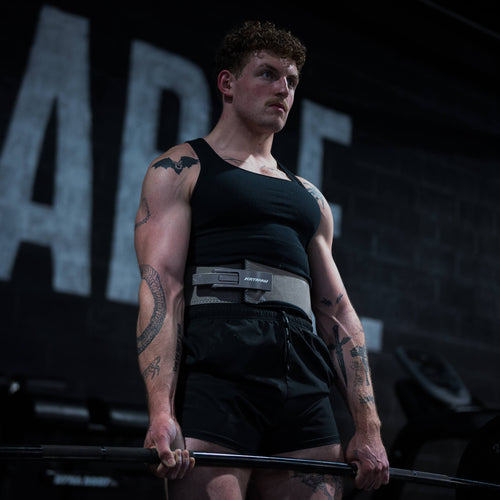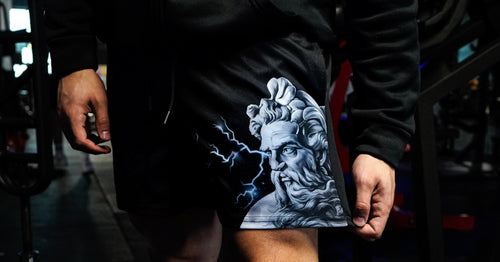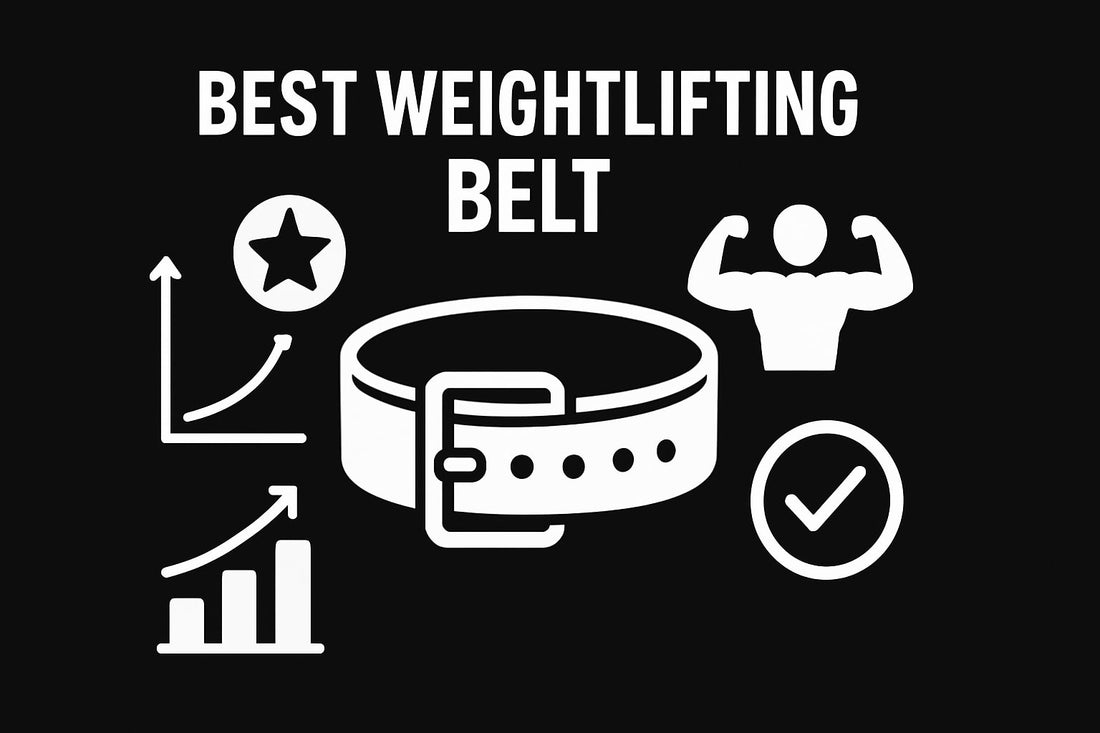Looking to take your training to the next level in 2025? A quality weightlifting belt is more important than ever for anyone serious about strength, from elite lifters to everyday gymgoers.
This guide will help you find the best weightlifting belt for your goals, so you can lift with more confidence and less risk.
Using the best weightlifting belt supports your core, protects your back, and can even boost your performance during heavy lifts.
Inside, you’ll discover our top 10 picks, learn what makes a great belt, and get expert-tested advice to help you choose the perfect fit.
Ready to lift safer and stronger? Let’s find the best weightlifting belt for you.
Why Use a Weightlifting Belt?
Choosing the best weightlifting belt is more than a style statement. It is a game-changer for lifters who care about safety, performance, and progress. Whether you are squatting, deadlifting, or tackling Olympic lifts, a weightlifting belt can be the difference between steady gains and risky setbacks.
Core Benefits for Lifters
The best weightlifting belt offers much more than a snug fit. Its main purpose is to stabilize the core and protect your spine during heavy lifts. Studies reveal that wearing a belt can increase intra-abdominal pressure by up to 40%, which helps brace your midsection and offloads stress from your lower back. This is especially important when performing compound lifts like squats and deadlifts.
A properly used belt can also lower the risk of back injuries. Powerlifters and Olympic lifters rely on belts in competition, and data shows injury rates are lower among consistent belt users. The psychological edge is real too. Strapping on the best weightlifting belt boosts confidence, making you more willing to push for heavier reps.
Technique matters, especially for beginners. A belt provides tactile feedback, encouraging better form and posture. For a detailed breakdown of how belts support your core and spine, see The Science of Weight Lifting Belts.
Key Benefits Table
| Benefit | Impact |
|---|---|
| Core Stabilization | Reduces spinal load, improves safety |
| Increased Pressure | Up to 40% boost in intra-abdominal support |
| Lower Injury Risk | Fewer lower back injuries in heavy lifts |
| Confidence & Focus | Enhanced lift mindset, better performance |
| Improved Technique | Encourages proper form, especially for new lifters |
Myths and Misconceptions
Many believe using the best weightlifting belt will weaken your core over time. This is a myth. Research and coaching guidelines agree that a belt, when used correctly, does not replace core strength. Instead, it adds another layer of support during the most demanding sets.
Experts point out that core muscle activation remains high when wearing a belt for heavy lifts. In fact, a belt can help you engage your core more effectively. Proper training routines always combine belt use with direct core work, ensuring balanced development.
Who Should Use a Weightlifting Belt?
The best weightlifting belt is not just for elite athletes. Powerlifters, CrossFit competitors, bodybuilders, and even everyday gymgoers can benefit. If you are lifting loads above 80% of your one-rep max, a belt becomes a practical tool for safety and performance.
However, not everyone needs a belt all the time. Those rehabbing injuries or new to lifting should focus on building raw core strength first. Still, over 70% of competitive lifters use a belt regularly, and CrossFit athletes often rely on belts for high-rep, heavy sets.
Here is a quick guide to who should use a belt:
- Powerlifters and Olympic lifters (for max and near-max lifts)
- CrossFit athletes (during high-rep, heavy sets)
- Intermediate and advanced gymgoers (for progressive overload)
- Beginners (only when technique is solid and loads are high)
When NOT to Use a Belt
Relying on the best weightlifting belt for every set can backfire. Overuse might limit your natural core development. Reserve the belt for maximal or near-maximal lifts, where extra support is needed most.
During warm-ups and accessory movements, skip the belt and let your core muscles do the work. This approach builds a stronger, more resilient midsection for long-term progress.
Remember, a belt is a tool, not a crutch. Prioritize core training outside of heavy sets, and inspect your belt regularly for signs of wear. This balanced approach ensures you get the most from your investment in the best weightlifting belt.
How to Choose the Best Weightlifting Belt in 2025
Choosing the best weightlifting belt in 2025 is all about matching your training style, goals, and comfort needs. With so many options on the market, understanding the key differences helps ensure you make a confident investment in your lifting journey.
Types of Weightlifting Belts
There are four main types of belts to consider when searching for the best weightlifting belt: lever, prong, Velcro, and ratchet. Each serves a different purpose and caters to unique training needs.
| Belt Type | Best For | Pros | Cons |
|---|---|---|---|
| Lever | Powerlifting | Fast on/off, secure fit | Less adjustable |
| Prong | Strength sports | Adjustable, reliable | Slower to fasten |
| Velcro | CrossFit, HIIT | Lightweight, flexible | Less support, wears faster |
| Ratchet | Versatile use | Micro-adjustable | Bulkier, less common |
Lever belts deliver maximum support for heavy lifts, while Velcro belts offer flexibility for dynamic workouts. If you want to explore all available options, check out the Weightlifting belt collections to compare different styles side by side.
Key Features to Consider
When evaluating the best weightlifting belt, focus on these essential features:
- Material: Leather belts are highly durable and supportive, while nylon belts are lighter and more comfortable for high-movement activities.
- Thickness and Width: Most belts are available in 10mm or 13mm thickness. Thicker belts provide more support but may feel stiff to beginners. Widths usually range from 4 to 6 inches, with 4-inch belts being competition standard.
- Buckle System: Choose from lever, single/double prong, or quick-release systems. Lever buckles are popular for their security and speed, while prong buckles allow more precise adjustment.
- Comfort and Fit: Look for contoured or padded designs that match your body shape. Proper sizing is crucial, so always measure your waist at the navel for the best fit.
- Adjustability: Some belts, like the ratchet and certain prong models, offer micro-adjustments for a custom feel.
A leather 10mm lever belt is often the go-to choice for intermediate lifters seeking a balance of comfort and support. Always prioritize a belt that feels stable and fits snugly without restricting movement.
Price Range and Value
The best weightlifting belt can range from $50 to $200, depending on materials, craftsmanship, and brand reputation.
- Entry-level ($50–$80): Nylon belts, basic leather models, good for beginners.
- Mid-range ($80–$130): Quality leather belts, more durable buckles, some warranties.
- Premium ($130+): Top-tier leather, custom designs, lifetime warranties, and extras like wrist wraps.
Premium belts often justify their price with extras like free accessories or extended warranties, making them a long-term investment for serious lifters.
Certifications and Competition Approval
If you plan to compete, ensure your belt meets federation standards. The best weightlifting belt for competitive lifting will have IPF, USAPL, or IWF approval. Some belts, especially those with Velcro or non-standard widths, may not be allowed in official competitions. Always verify approval status before purchasing to avoid surprises on meet day.
Top 10 Best Weightlifting Belt Picks for 2025
Choosing the best weightlifting belt in 2025 means finding a blend of support, style, durability, and value. Whether you are a powerlifter chasing PRs or a beginner seeking safety, this list covers every need.
We have tested, researched, and compared the most popular belts to bring you these top 10 picks. Each product review below breaks down the crucial details, so you can confidently select the best weightlifting belt for your goals.
Katamu Premium Lever Belt
The Katamu Premium Lever Belt delivers a striking mix of function and fashion. Made from premium leather, it is available in both 10mm and 13mm thickness, making it a top contender for those seeking the best weightlifting belt in 2025.
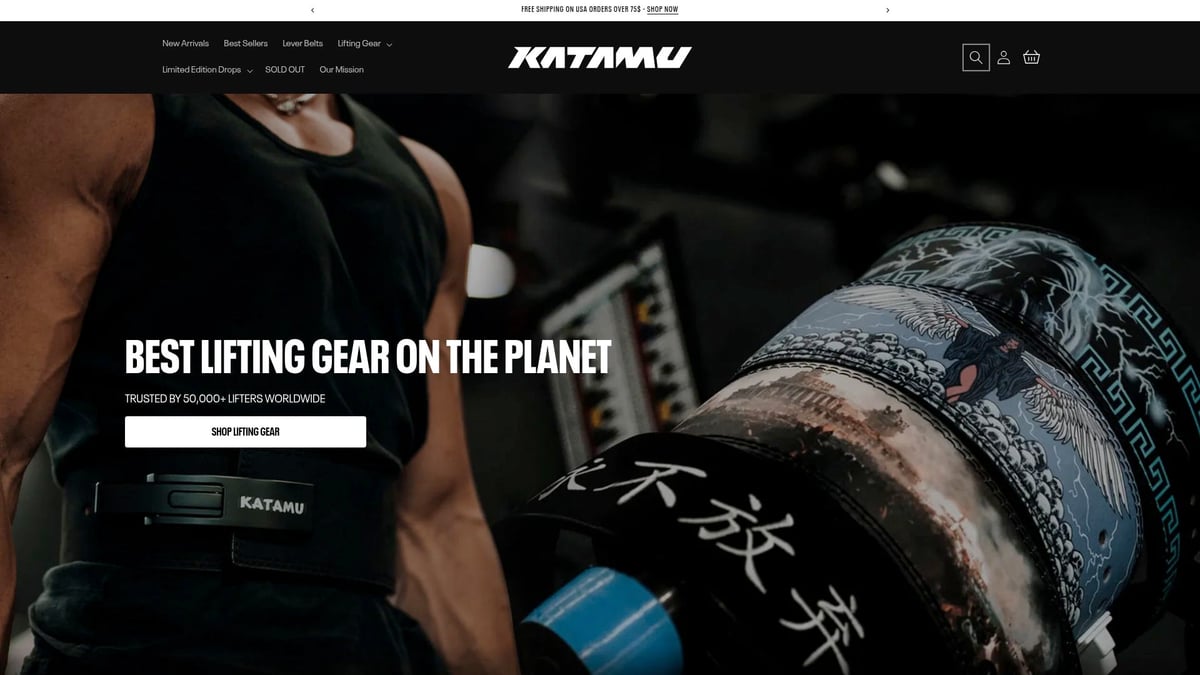
Its lever buckle system allows for quick adjustments, while the unique designs set it apart visually. This belt comes with a lifetime quality guarantee and includes free wrist wraps, adding value for buyers.
Targeted at everyone from average gymgoers to seasoned lifters, the Katamu belt excels in powerlifting, bodybuilding, and general strength training. Pros include a wide sizing range, 30-day money-back guarantee, and a look that stands out.
The only drawback is its premium price point, but the durability and extras justify the investment. If you want a belt that performs as good as it looks, this is a stellar pick.
Rogue Fitness Ohio Lifting Belt
The Rogue Fitness Ohio Lifting Belt is a classic choice for serious athletes. Crafted from 10mm vegetable-tanned leather, this single prong belt is renowned for its high-quality construction and IPF approval, making it the best weightlifting belt for competition-focused lifters.
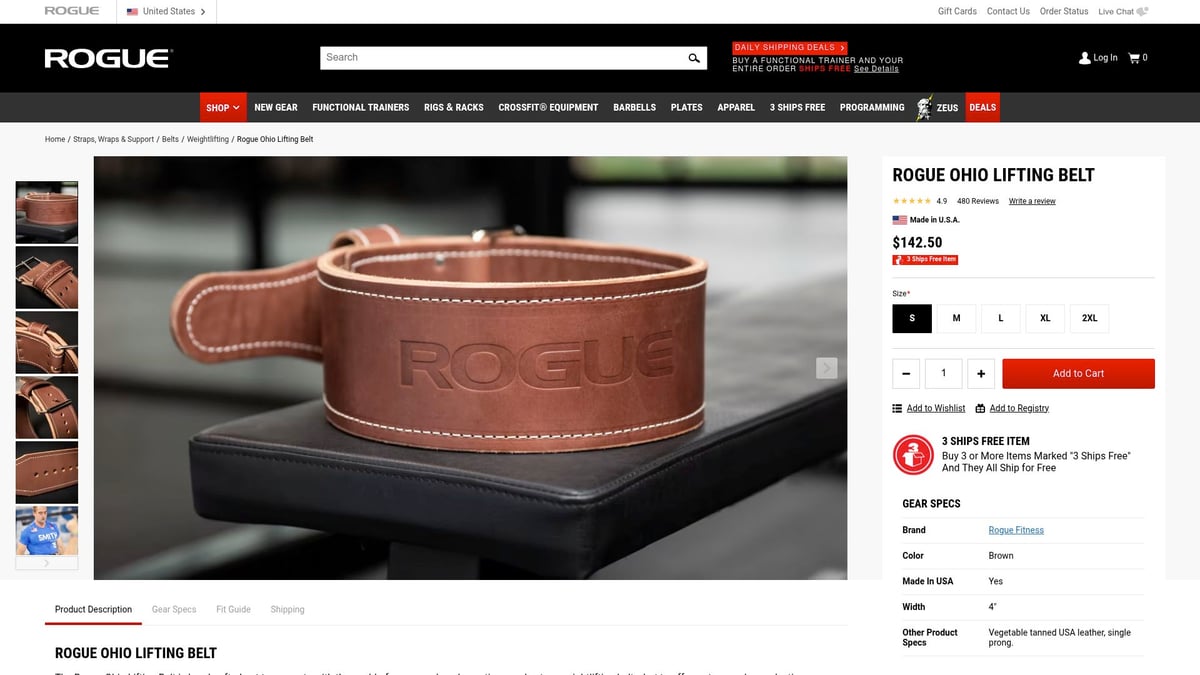
It offers excellent durability and a comfortable break-in period. The straightforward design appeals to powerlifters and strength athletes who value simplicity and reliability.
Pros include solid support for heavy squats and deadlifts, while the main drawbacks are the longer break-in period and limited style options. This belt excels in competitive settings, providing the support needed for maximal lifts.
If you prioritize performance and legal competition use, the Rogue Ohio Belt is a dependable, time-tested investment.
Gymreapers Quick-Locking Weightlifting Belt
For those seeking the best weightlifting belt for functional training, the Gymreapers Quick-Locking Weightlifting Belt delivers. Made from lightweight nylon with a quick-locking buckle, it is easy to adjust on the fly, ideal for CrossFit and circuit training.
The 4-inch width and affordable price make it accessible to beginners and seasoned athletes alike. Its flexibility offers comfort during dynamic movements, though it sacrifices some support compared to leather options.
Pros include affordability, comfort, and ease of use. The main cons are reduced support for maximal lifts and lack of competition approval.
If your workouts involve fast-paced, high-rep sessions, this belt offers the right balance of support and flexibility without breaking the bank.
SBD 13mm Lever Belt
The SBD 13mm Lever Belt is engineered for elite performance. With a hefty 13mm English leather construction and a patented lever, it is widely regarded as the best weightlifting belt for advanced powerlifters.
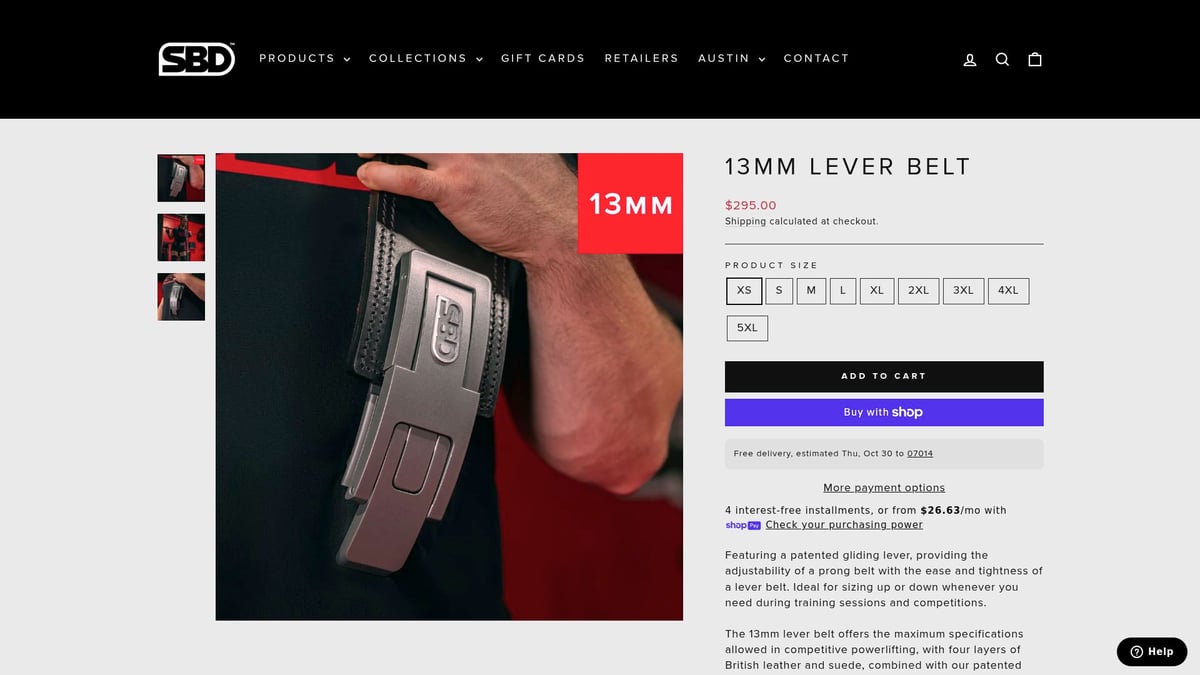
Maximum support and IPF approval make it a staple in competitive environments. The craftsmanship ensures long-term durability, and the robust lever system delivers a secure fit under heavy loads.
Pros include exceptional support and a long-lasting build. The main cons are the high price and that it may be more belt than needed for casual lifters.
For those pushing maximal lifts or prepping for competition, this belt is a top-tier choice.
Element 26 Self-Locking Weightlifting Belt
Olympic lifters and CrossFit athletes searching for the best weightlifting belt will appreciate the Element 26 Self-Locking Weightlifting Belt. Made from durable nylon with a self-locking buckle, it provides a secure, uniform 4-inch support.
Its lightweight design and quick adjustments make it perfect for fast-paced workouts. The belt is competition approved, which is a big plus for those entering events.
Pros are affordability, comfort, and easy on/off. The main con is that it is not as rigid as leather belts, and color choices are limited.
If you need reliable support without sacrificing mobility, this belt is an excellent fit for high-rep and Olympic-style training.
Inzer Advance Designs Forever Lever Belt
Inzer’s Forever Lever Belt has a legendary reputation among strength athletes. Available in both 10mm and 13mm leather options, it is built for longevity with a lifetime warranty, making it one of the best weightlifting belt choices for powerlifters.
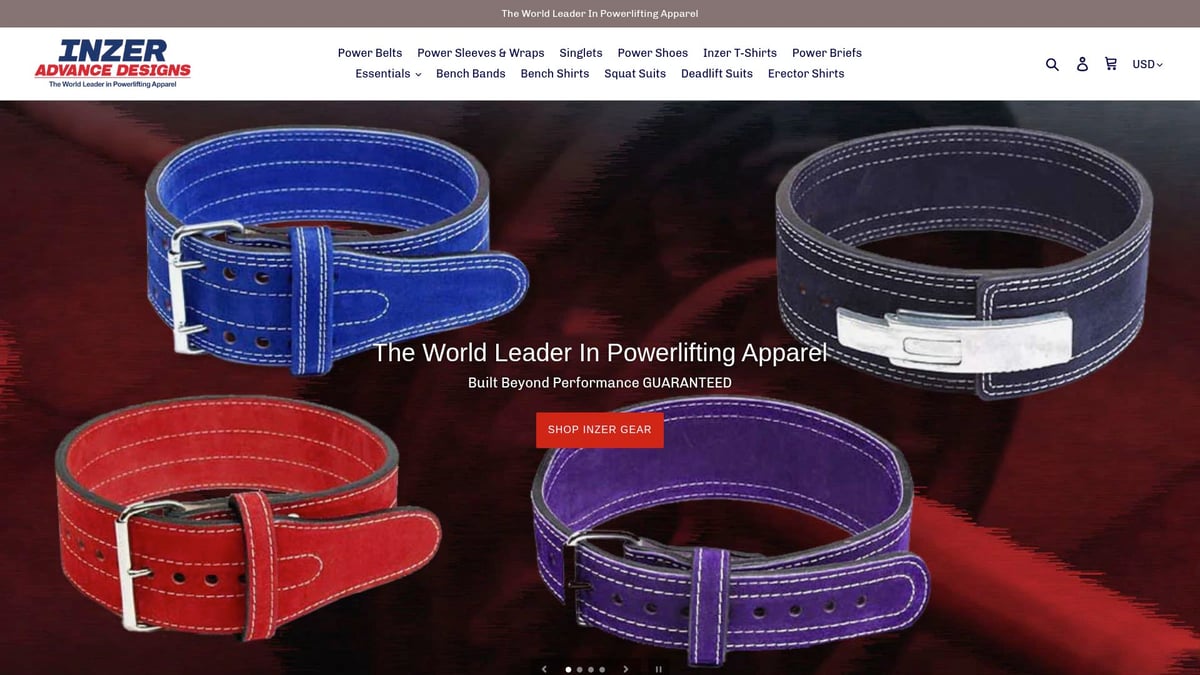
The lever buckle system ensures a tight, secure fit, and the customizable sizing and color options let lifters personalize their gear. Pros include the lifetime guarantee and robust construction.
Cons are the stiffness out of the box and a heavier build. This belt is ideal for heavy powerlifting and strongman training, where durability and support are non-negotiable.
Dark Iron Fitness Genuine Leather Pro Weight Lifting Belt
If you are looking for the best weightlifting belt on a budget, the Dark Iron Fitness Genuine Leather Pro Weight Lifting Belt deserves attention. Featuring a 4-inch width, soft leather, and double stitching, it offers comfort and flexibility for general use.
This belt is perfect for beginners and intermediate lifters. It is easy to break in and provides good support for most lifts. Pros include affordability and comfort.
Cons are the lack of competition certification and less support for elite-level lifts. For those seeking a reliable belt for everyday gym sessions, this is a smart, wallet-friendly choice.
Pioneer Cut Powerlifting Belt by General Leathercraft
The Pioneer Cut Powerlifting Belt boasts innovative adjustability, thanks to its unique Pioneer Cut design. Available in 10mm or 13mm premium leather, it is ideal for athletes wanting a custom fit from their best weightlifting belt.
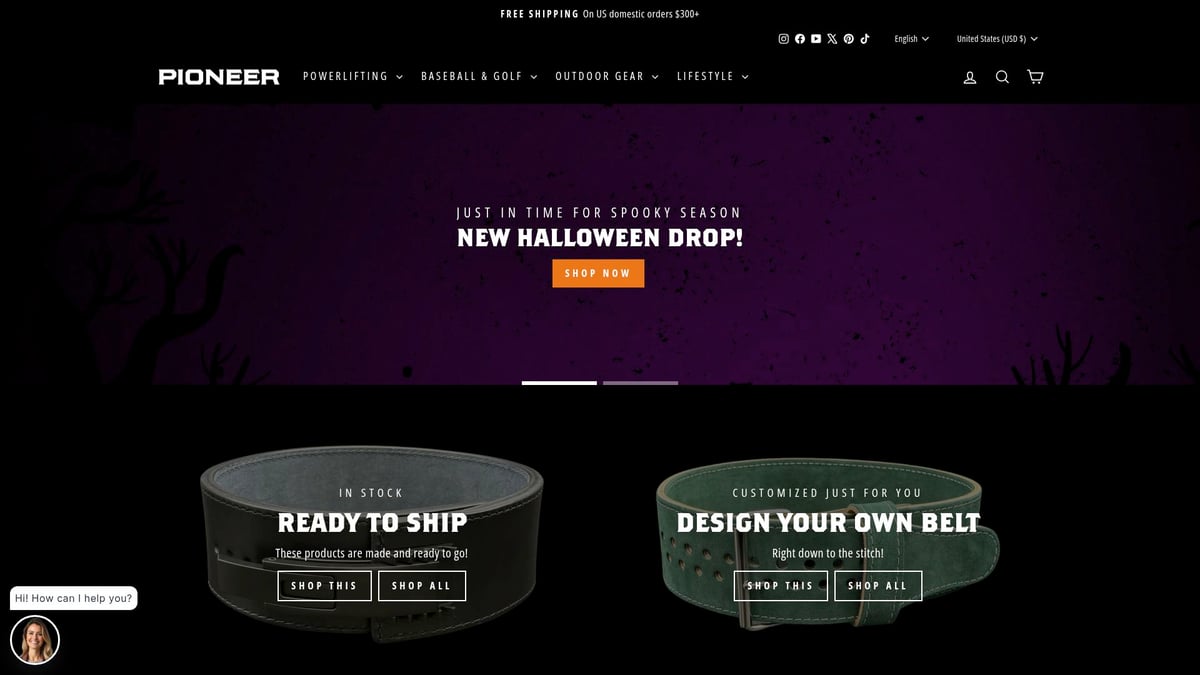
Made in the USA, it features micro-adjustments for precise sizing. Pros are the premium materials and custom options, while cons include potential wait times for custom orders.
This belt excels in powerlifting and competitive lifting, offering the flexibility and support serious athletes demand.
Harbinger 4-Inch Nylon Weightlifting Belt
The Harbinger 4-Inch Nylon Weightlifting Belt is tailored for beginners and casual gymgoers. Its contoured design, foam core, and Velcro closure make it extremely comfortable and easy to use.
If you are seeking the best weightlifting belt for light to moderate lifting, this is a top choice. It is lightweight, affordable, and travel-friendly.
Pros are comfort and price, while the main drawbacks are limited support for heavy lifts and lack of competition approval. Perfect for fitness classes or those just starting their lifting journey.
Iron Bull Strength 10mm Lever Belt
Combining style and substance, the Iron Bull Strength 10mm Lever Belt is a favorite among intermediate and advanced lifters. Made from suede leather with a lever buckle, it delivers solid support and eye-catching color options.
A lifetime warranty and strong construction position it as the best weightlifting belt for those who want both value and longevity. Pros include great value, comfort, and robust support.
Cons are sizing that may run small and occasional lever tightening. Ideal for powerlifting, bodybuilding, and any heavy compound movement.
For more in-depth reviews, guides, and expert tips on choosing the best weightlifting belt, check out the Best weightlifting belt blog articles for additional resources and advice.
How We Selected the Best Weightlifting Belts for 2025
Choosing the best weightlifting belt for 2025 meant going far beyond a simple product search. We combined hands-on testing, expert analysis, and thousands of user reviews to bring you a list you can trust. Our process ensures every recommendation meets the highest standards for performance, safety, and value.
Research and Testing Methodology
To identify the best weightlifting belt options this year, we started with a strict set of criteria. Our team evaluated each belt for:
- Durability and construction quality
- Level of support during heavy lifts
- Comfort and fit for a range of body types
- Price, including value for money
- User feedback and satisfaction scores
- Competition approval (IPF, USAPL, or IWF)
We referenced competitor articles and verified our picks against top industry guides. This comprehensive approach ensures only the best weightlifting belt choices make our list.
Expert and User Feedback
No review of the best weightlifting belt is complete without input from those who use them daily. We consulted certified strength coaches and seasoned lifters to understand what truly matters in a belt.
We also analyzed user reviews across top retailers and forums. Products with 4.5 stars or higher and consistent praise for support and comfort scored best. For example, some belts received over 1,000 positive reviews, highlighting their reliability and real-world performance.
Real-World Performance
Every contender for best weightlifting belt was tested during squats, deadlifts, and Olympic lifts. Testers noted how each belt affected stability, comfort, and adjustability during intense sessions.
Some belts excelled in specific use cases, such as CrossFit or powerlifting. We also considered recent research, including this study on how weightlifting belts influence deadlift mechanics and perceived exertion, to validate our hands-on results. This ensured that our recommendations are rooted in both science and practical experience.
Value, Warranty, and Customer Service
We believe the best weightlifting belt should last for years. That is why we assessed long-term value, warranty terms, and customer support responsiveness.
Brands offering lifetime warranties, like Inzer and Iron Bull Strength, earned extra points. We also checked return policies and how quickly companies responded to questions or issues. Reliable customer service is crucial for peace of mind when investing in quality gym gear.
Weightlifting Belt Care, Maintenance, and Longevity Tips
Keeping your best weightlifting belt in top condition is essential for safety, performance, and value. Proper care ensures your belt remains supportive and comfortable for years. Let’s break down the most effective ways to maintain, clean, and extend the life of your best weightlifting belt.
Cleaning and Storage Best Practices
A clean best weightlifting belt not only looks better but also performs better in the gym. For leather belts, wipe down the surface with a soft, damp cloth after each use. Use a leather cleaner and conditioner monthly to prevent cracking and keep the leather supple. For nylon belts, hand wash with mild soap and cold water, then air dry completely before storing.
Store your best weightlifting belt flat or loosely rolled in a cool, dry place. Avoid leaving it in direct sunlight or damp gym bags, as moisture and heat can damage materials over time. Regular cleaning and proper storage prevent odor buildup and extend belt life.
Break-In and Adjustment Period
When you first purchase a best weightlifting belt, expect a short break-in phase, especially with thick leather models. Initially, the belt may feel stiff, but this is normal. To speed up the break-in process, gently flex the belt back and forth, and wear it for short sessions during warm-ups and lighter lifts.
Within a few weeks, your best weightlifting belt will conform to your body shape and become more comfortable. Adjust the fit as needed, paying attention to how it feels during heavy lifts. Patience during this period ensures long-term comfort and optimal support.
Inspection and Safety Checks
Regular inspection is crucial for getting the most from your best weightlifting belt. Before each session, check the stitching, buckle, and material for any signs of wear, cracks, or fraying. Pay special attention to the closure system, as a faulty buckle can compromise safety.
If you spot significant wear or malfunction, replace your belt immediately to prevent accidents. According to research on powerlifting injuries, well-maintained gear plays a role in reducing injury risk. Keeping your best weightlifting belt in good condition is a simple but vital step for safe training.
Maximizing Belt Lifespan
Want your best weightlifting belt to last five years or more? Start by rotating between two belts if you train frequently, which reduces daily wear. Always store your belt away from moisture and direct sunlight, as these elements can degrade both leather and nylon.
Clean your best weightlifting belt regularly and avoid sharing it, since sweat and bacteria can shorten its lifespan. With consistent care and proper storage, your belt will provide reliable support for countless training sessions, making it a valuable long-term investment.
Frequently Asked Questions About Weightlifting Belts
Looking for answers before buying the best weightlifting belt? Here are the most common questions, backed by expert advice and real-world experience.
How tight should a weightlifting belt be?
A belt should fit snugly, allowing you to brace your core, but not so tight that breathing or movement is restricted. Adjust for comfort and performance.
Can beginners use a weightlifting belt?
Yes, beginners can use the best weightlifting belt for learning proper bracing during heavy lifts. For more on sizing and beginner-friendly options, see the Graduation Lifting Belt product details.
Are belts allowed in all competitions?
Not all belts are competition legal. Look for IPF, USAPL, or IWF approval if you plan to compete.
How do I measure for the correct belt size?
Measure around your waist at the navel, not the hips. Always check the brand’s sizing chart before ordering.
Is a lever or prong belt better for powerlifting?
| Feature | Lever Belt | Prong Belt |
|---|---|---|
| Adjustment | Quick, fixed | Fine-tuned, slower |
| Popularity | Powerlifting | General lifting |
| Choose the best weightlifting belt based on your need for speed or adjustability. |
Do belts help with deadlifts and squats equally?
Yes, belts provide core support during both lifts, boosting intra-abdominal pressure and stability.
What’s the difference between 10mm and 13mm belts?
10mm belts are more flexible and comfortable for most, while 13mm belts offer maximum support for elite lifts.
Can I use a weightlifting belt for CrossFit or Olympic lifting?
Absolutely! Many CrossFit and Olympic athletes use belts for heavy, high-rep sets. For more on the debate about proper use, read The Weight Belt Controversy.
Now that you’ve seen the best weightlifting belts for 2025 and know exactly what to look for, you’re in the perfect spot to upgrade your gym setup. Whether you want unbeatable support for heavy lifts or a belt that stands out with cool designs, having premium gear really does make a difference in your comfort and performance. If you’re ready to take your training seriously and invest in quality that lasts, why not start building your own lifting setup today? Explore options that fit your style and needs—Build your setup.
